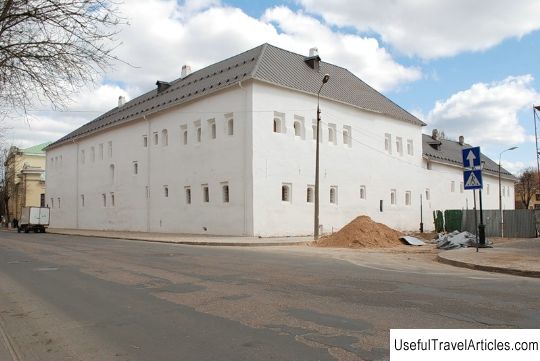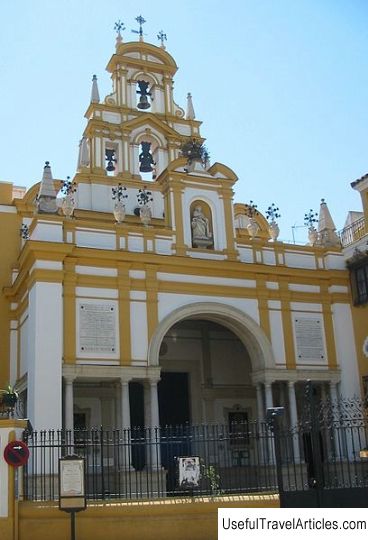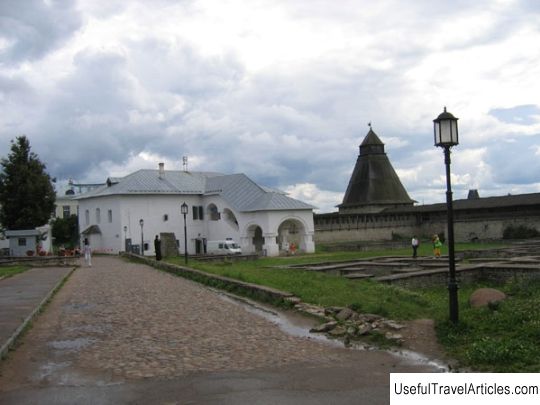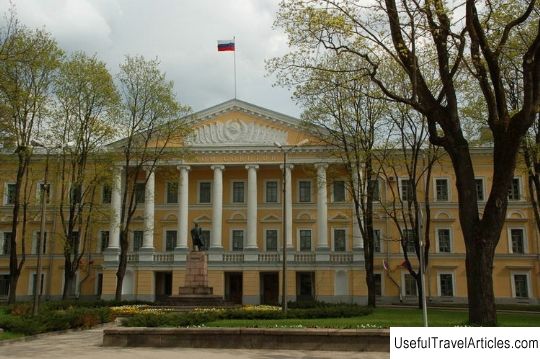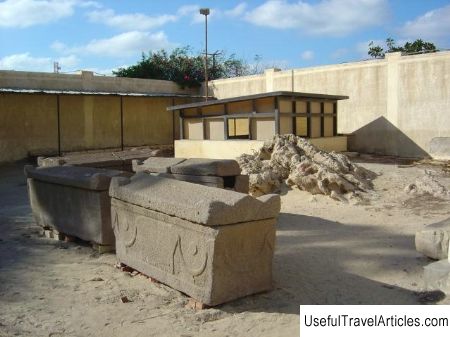Menshikov's Chambers description and photos - Russia - North-West: Pskov
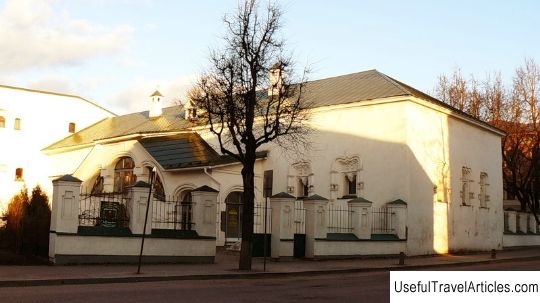
Menshikov chambers description and photos - Russia - North-West: Pskov. Detailed information about the attraction. Description, photos and a map showing the nearest significant objects. Photo and descriptionThe chambers of the wealthy Pskov merchants Menshikovs on Romanovaya Gorka (Romanikha) were located on Velikaya Street, the oldest street in the city, then it was renamed Velikolutskaya, and now it is called Sovetskaya. The name Romanov Gorka comes from the name of the mayor Sidorovich Roman. He is mentioned more than once in the Pskov chronicles, from the end of the XIV century until his death in 1419. Sidorovich did a lot to strengthen the city, he built and fought. His estate was located on a mountain on Polonische, later the mountain was named after the mayor - Romanov. At the beginning of the 17th century, the construction of stone civil buildings began on Romanov Gorka. The ensemble of stone chambers of the Menshikov merchants is born in the very center of Romanikha. Many outbuildings surrounded 4 large buildings. According to the results of studying the customs books of 1670-1671, it was revealed that the head of the merchant family was Menshikov Semyon. He and his son Thomas were among the richest merchants in Pskov. Probably, the first chambers were built by Semyon Menshikov. Studies by the Pskov scientist Spegalsky show that they were a 3-storey building made of stone, and, most likely, there were 2 more chopped wooden floors. The first two floors were converted into storage rooms. The chambers of the second and third floors were heated by stoves from the vestibule. The building had two porches: the front one, facing the western side of the chambers, and the other - to the eastern, into the courtyard. Both porches led to the second floor into a common hallway. Two internal stairs from the vestibule of the second floor led to the vestibule of the third floor, which is the reception area. On both sides of the entrance were a spacious dining room and a `` merry chamber. '' The two chopped floors - the fourth and the fifth - contained bedrooms, chambers and rooms. The second chambers, built in the early 1670s, probably by Thomas, the eldest son of Semyon Menshikov, adjoin the western facade of the first chambers. Thomas, who had successfully organized trade with his father, became rich, got married and, separated from his father's family, began to conduct his own trading business. It was then that the second chambers of the Menshikovs were built. Their northern facade, which overlooked the front yard, was adjoined by a high, pillared porch leading from both sides to the second floor canopy. On the first floor there were crates in which goods were stored. Spacious warm hallways occupied the middle of the house on the second floor. The dining room was located on the right side of the passage. There were oak benches here, and a huge table occupied the entire middle of the room. From the dining room one could go to the cellar, where the wines were kept, and to the courtyard, where the cook was located. On the left side of the vestibule there was an uninhabited chamber connected by a passage with the first chambers. It was connected by an internal staircase with a basement, from which an underground passage was formed, connecting all the Menshikov chambers. Perhaps the households here were going to pray in front of the icon case. The third floor was occupied by the `` merry chambers '', consisting of two rooms, distinguished by rich decoration. The facades of the second chambers were distinguished by their originality. The windows of the second and third floors are decorated with carved stone frames, in addition, the windows of the `` merry chambers '' and the dining room were additionally decorated with hanging arches. The Menshikovs' third chambers stand separately, closer to Nekrasov Street. They were probably built by one of the younger Menshikovs, who, according to documents from the 1670s, are known as independent merchants (Larion, Kuzma and Gavrila Menshikov). The layout of the third chambers repeats the layout of the second, but differs in smaller dimensions. There are also underground passages connecting all the Menshikov chambers. The fourth chambers were built at the end of the 17th century. They are located in the courtyard opposite the first chambers. The fate of the Menshikov chambers is very tragic. At the beginning of the 18th century, the Menshikovs became poorer. In 1710 a terrible epidemic broke out in the city, and soon there was a terrible fire that destroyed the whole of Pskov. The Menshikovs' chambers also suffered: wooden floors and superstructures burned down, the masonry of the third floor was damaged. After these events, the Menshikovs no longer lived in their wards. They have been sold. Despite significant losses and subsequent alterations of the original appearance, the Menshikov chambers were of interest to connoisseurs of ancient architecture, many art critics, historians and artists admired them. The chambers have now been restored, they contain a gift and flower shop, where you can buy ceramic souvenirs, books, booklets, flower arrangements.       We also recommend reading Schlossberg description and photos - Austria: Graz Topic: Menshikov's Chambers description and photos - Russia - North-West: Pskov. |
